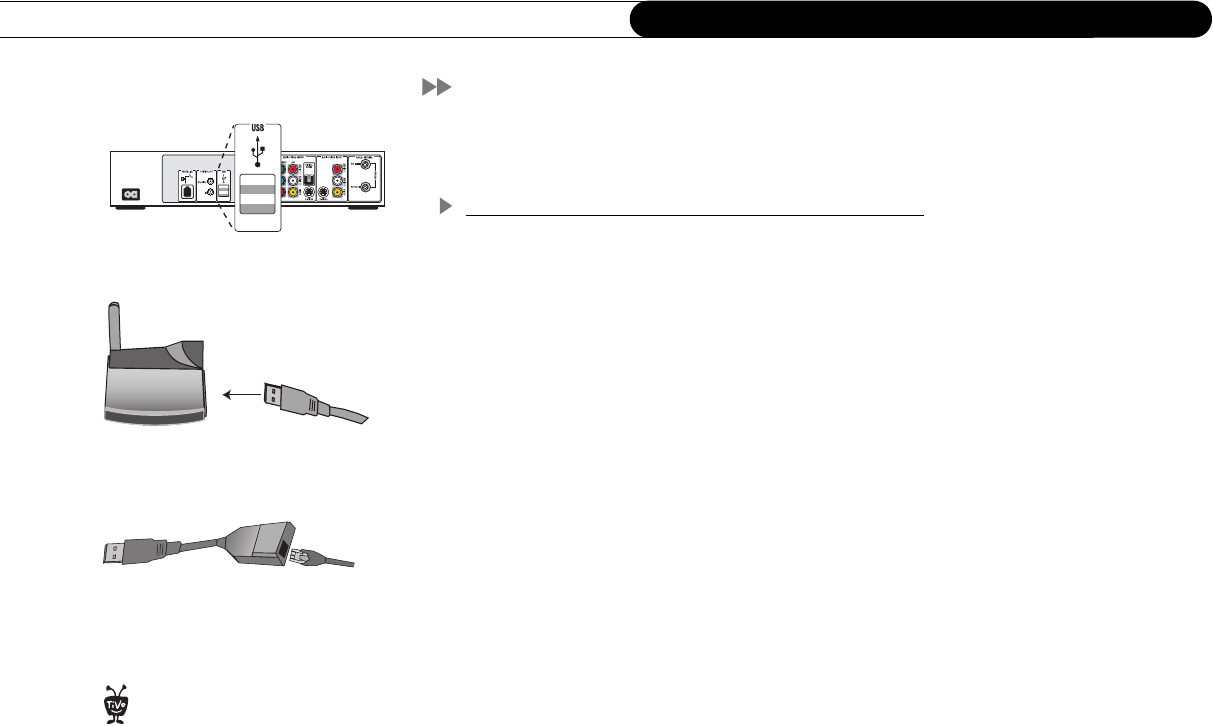
116
Chapter 7
Connecting to a Home Network
Home Networks
When we refer to a “home network,” we mean two or more devices (probably computers),
connected to a router.
USB Ports, Wireless and Wired Network Adapters
On the back of your DVR, you will see two USB ports that can be used to connect either a
wireless or a wired (Ethernet) USB network adapter. Although you can use either of these
ports, only one network adapter can be connected at a time.
USB network adapters let a Recorder use a USB port to communicate with other
networked devices. Whether you choose wireless or wired (Ethernet), you will need a
network adapter for each Recorder you wish to connect.
Choosing Wireless or Wired (Ethernet). You can connect your Recorder to your home
network using either a wireless or wired (Ethernet) connection. Here are some notes to
help you choose which approach you want to use.
• Wired (Ethernet). Ethernet connections are generally faster, less expensive, more
reliable and less susceptible to interference than wireless networks. To connect a
Recorder to a wired (Ethernet) network, see “Connecting to a Home Network Using
Wired (Ethernet)” on page 119
• Wireless. Connecting your Recorder wirelessly may be more convenient because you
do not have to run a cable from your Recorder to another device. However, wireless
networks are typically more expensive and slower than Ethernet networks, and may be
subject to interference from appliances such as microwaves and cordless phones. To
connect a Recorder to a home network wirelessly, see “Connecting to a Home
Network Using a Wireless Adapter” on page 117.
The USB ports on the back of your Recorde
r
An Ethernet USB network adapter
(yours may look different)
A USB Wireless network adapter
(yours may look different)
TiVo has recommendations for
compatible models of wireless and
wired (Ethernet) network adapters. Be
sure to check www.tivo.com/adapters for
the latest information.
®


















